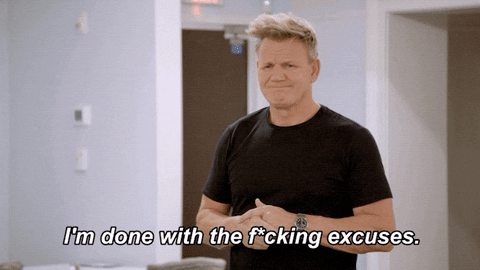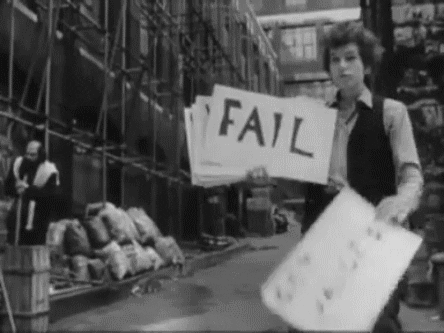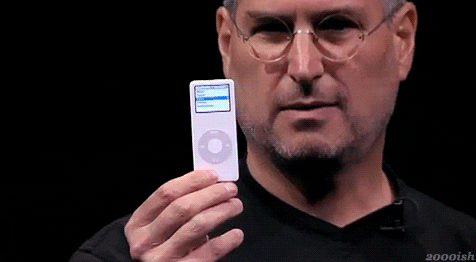- The Ladder
- Posts
- From Limitation to Innovation: The 'Inside the Box' Method
From Limitation to Innovation: The 'Inside the Box' Method
💪 Achieving more with less through strategic focus 🎯

👋 Hello and welcome to our new sign-ups!
This week I’m taking a deep dive into one of the most under-rated business books I’ve ever read. I’m not only going to show you how you can beat the big boys with their big budgets, but how your limitations can be reliably turned into strategic advantages to exploit. It’s like strategy judo! 🥋
If you missed last week’s edition on virtuous circles, the myths and the making of, you can catch-up here ⏪
This week:
I hope you enjoy.
Old man, look at my life / I'm a lot like you were,


If you were sent The Ladder by some legend, click below to subscribe. And give them a hug from me 🤗
The greatest invention of the 19th century was the invention of the method of invention.
⏱️ ~ 9 minutes 27 seconds read
When it comes to marketing, "if onlys" and "what ifs" are everywhere. Campaigns that could have shattered quarterly sales and hoovered up awards—if only there had been a larger budget, more time, or a spark of unconventional creativity.
Often we look to blame the constraints and cards we are dealt with as the sole cause for falling short. As if twice the budget for advertising or product development would have guaranteed success.
Let’s get real.
A shit idea with a huge budget, is just an even bigger (and more public) pile of shit. And a fundamentally undesirable product, even with all the funding runway in the world, will still never make anyone happy.
But what if the very constraints we lament are not the chains that bind us but the keys to unlocking our most innovative and effective marketing strategies?
🤨 … lemme explain.
Drew Boyd and Jacob Goldenberg's book "Inside the Box", challenges the idea that creativity flourishes best with big budgets and freedom, proposing that breakthrough innovation lies instead in our constraints.
This week we’re inviting you to shift your perspective, we’re going to help you to see constraints not as barriers but the launching pad for true innovation.
This week, you’re going to run out of excuses.

Chef Ramsay is not having it.
This week you’re going to learn that the chump down the road with twice the budget, is not only soft, and half the innovative leader you are - but you’re about to find out why he’s painting a target on his back and playing chicken with failure.
DON’T HATE ON THE BOX 📦
We've been conditioned to equate bigger budgets with greater success.
Yet, business history is littered with the remnants of campaigns and products that, despite their colossal budgets and seemingly limitless resources, didn’t just fizzle out into mediocrity - they became notorious examples of bloated corporate folly.
Take my hand as we go for a joyous stroll down disaster lane:
New Coke (1985): Who could look past Coca-Cola's now notorious attempt to rejuvenate its brand by changing the classic Coke formula. Despite spending $4M in research and many multiples more on advertising, the company dramatically underestimated consumers' emotional attachment to the original flavour. The backlash was swift and severe, leading Coca-Cola to reintroduce the classic formula as "Coca-Cola Classic” and thousands of MBA case studies were born.
Microsoft Zune (2006): Microsoft's entry into the digital media player market, about 5 years too late and woefully low on ‘cool’, intended to rival Apple's iPod. Despite hundreds of millions invested by business psycho CEO Steve Bulmer, the Zune struggled to push past single digits of market share - and was discontinued in 2011. Again, about 5 years too late.
Google Glass (2013): In 2013, it was hard to avoid the technological and cultural break-through that was about to dawn via “Google Glass” - the revolutionary augmented reality glasses launched by the search giant. Despite Google reportedly investing more than $200M into the technology and promotion, privacy concerns, limited functionality, and high price point led to its failure - and the term “Glasshole” entered the cultural lexicon. Still an all-time fav for me. 👓
Segway (2001): Let’s round this out (get it?) with one of the most famous, and bewildering product brainfarts of all time: The Segway. Touted as a revolutionary transportation device destined to change how people moved around cities. With over $100M in development alone, the Segway did nothing more than tank birth rates and produce some magnificent memes. Unable to get up a simple flight of stairs inside 45 minutes, the Segway was finally discontinued in 2020, an inexplicable 19 years after its launch.

I could write an entire separate weekly newsletter dedicated to juicy AF product and marketing failures like these (🤔 hmmm not a bad idea) - but it’s clear to see, big budgets and grand visions do not guarantee more zeros in the bank at the end of the day.
The truth is, unlimited resources can often breed complacency, stifling the very creativity and innovation we seek to unleash. When constraints are removed, the necessity—the mother of invention—is no longer in the driver’s seat. Here’s where you get bloated, unfocused campaigns or product developments that lack the sharpness, iteration and ingenuity required for success.
Paradoxically: the more you have, the less you innovate.
Worse still, the higher the expectation of success.
It’s bad enough to be in an environment where failure is not considered a lesson, but it’s hard to feel sorry for the guy who’s been given everything from the executive, investors and the board - talking a big game. Only to come back with nothing to show but a powerpoint deck full of excuses.
Don’t be that guy.
Instead, develop an intimate and razor sharp understanding of your consumer and the market. Get back to basics, strip away the layers of complexity and noise to focus on the core of what makes marketing and product leadership truly effective: connection, creativity, needs and relevance.
Knowing your audience better than they know themselves, understanding the nuances of the market, and having a finger on the pulse of user behaviour are the foundational blocks upon which truly innovative and impactful business is built.
This knowledge doesn't require a hefty budget; it requires curiosity, empathy, and a willingness to listen and learn.
The aim is to not be rich in resources, but rich in insights - everything else from there gets you much closer to success.
With the lessons of spectacular dumpster fire failures behind us and an unparalleled understanding of our market in mind, let’s jump into the models and approaches found “Inside The Box”.
DIVIDE AND REARRANGE: THE BRICKS 🧱
The first technique we'll explore from "Inside the Box" is a lot like my 5 year old playing with his Lego on the floor: he has a set number of different pieces, has lost the instruction manual, and the opportunity now is it find a new, more interesting (and useful) thing to make.
To hell with that fancy Ninjago dragon Henry - let’s Divide and Rearrange, let’s see what you can do mate.
Let’s start with a simple example, a refrigerator. Its core components are made up of: the door, the main compartment, the vegetable drawer, the light, and the compressor at the back. It also serves as a family message board, and in my house a high shelf to keep confiscated items away from little hands.

Sorry kid, that ninja sword stays up there until your seven.
Suddenly you are now looking at a bunch of parts that can be put back together in all sorts of interesting, and potentially more useful ways.
How about a household compressor in the basement. With some clever plumbing you have several drawers or cupboards in your kitchen that are lined and now fully refrigerated - each with their own thermostat and little light, making the kitchen much quieter and you now have a lot more space.
Now, apply this thinking to a marketing context. Consider your campaign as the refrigerator. List out its 'components': the steps in your funnel, targeting, messaging, channels, visual elements and artwork, and your call-to-action.
What happens if you start moving these pieces around? Is your message being lost in an email, but could really stand out in a social campaign? Could your artwork be repurposed in a way that better highlights your call-to-action?
The real magic happens when you dare to think beyond traditional configurations. What if you could rearrange your campaign elements to not just meet your audience where they are, but to surprise them, engage them in a new way, or even solve a problem they didn't realise they had?
Going back to the refrigerator - Everyone is used to needing space for one in their kitchen. They’d be surprised to find out what life is like when it simply ‘disappears’. You could show it to them.
Do you see the power of Divide and Rearrange now?
Deconstructing down to core features, experience, channels and componentry and then seeing them in a new and unexpected light, rediscovering their potential: it’s powerful, and exciting.
So, take those Lego blocks of your marketing strategy and product, spread them out, and start building something that surprises both you and your audience. The creativity is in the rearrangement, and the possibilities are endless.
SUBTRACT AND REPLACE: LESS IS MORE ✂️
Innovation often happens not by adding, but by strategically removing. This Subtract and Replace approach, reminiscent of sculpting a masterpiece by chipping away marble, teaches us the value of simplification.
Often less is more, Donatello.
Take the iPod Shuffle as a prime example. Apple chose to eliminate the display screen, a seemingly backward step. Yet, this subtraction catered to a niche—runners preferring simplicity and compactness—turning the device into a runaway success 🏃♀️💨
This perfectly demonstrates that thoughtfully and deliberately removing features can in fact meet specific needs more effectively, enhancing user experience and broadening market appeal.

Can you believe people used these gargantuan devices?
This method applies to your marketing too. It’s very easy to throw everything into a campaign, lots of objectives, lots of stages in the funnel, all the channels - and all the dollars!
By stripping it down to a single, powerful message and call to action, based on a single and power consumer insight and truth - we create clarity and impact, improving engagement and conversions.
Removing stages in our funnel, to create clarity and reduce the number of objectives can build efficiencies and significantly reduce your workload.
It's about honing in on what's truly essential, both in product features and marketing strategy, to deliver a more focused, efficient, effective and appealing offering to your audience.
And let’s be honest, it’s also about doing the right things, not just all the things 😬. We’re all guilty of that at some point.
MULTIPLY AND REVISE: MAGNIFYING VALUE 🔍
With a great understanding of your user and your product, it’s easy to identify the key components, features or aspects of a campaign or product that deliver the “ah ha” moment of value for your user.
If you don’t know what that is, go back, spend time with your users and figure that out 🔙
WIthout this you are shooting in the dark - and frankly it’s a miracle you’ve made it this far.
The Multiply and Revise method is about taking that key component of our product or strategy and doubling down on it thoughtfully.
It's not about mere addition or multiplication, but rather reimagining its impact when multiplied.
Consider the book’s example of Gillette's TRAC II Twin Blade Shaving System. They didn't just add another blade; they rethought its purpose, creating a system where the first blade lifts the hair and the second cuts it, significantly improving the shaving experience.
And subsequently triggering a razor blade count arms-race.

The bestest a man can get!
This approach of multiplying with a purpose showcases how revising a key element can lead to substantial improvements.
This could be a UGC angle, it might be an insane depth of social proof - It's about finding that core message or technique that works and then expanding and adapting it.
Ensure each multiplication provides a distinct enhancement, tailored to different aspects of your strategy or channels.
This strategy pushes us beyond simply adding more (no you don’t need 22 blades 🪒). It encourages us to delve into our successes, identify the most impactful elements, and creatively rethink them for even greater results.
GET IN THE BOX 📦🔫

“I said Hop In”
Now it’s over to you to put the lessons from this amazing book into practice in your organisation. Here’s 5 copy-and-paste actions you can take today:
Host Constraint-Based Creative Workshops: Run workshops with your teams to tackle current constraints creatively, using "Divide and Rearrange" exercises. This encourages innovative ideas that fit within real-world limits. No idea is too wacky.
Analyse Components of Success: Break down successful campaigns into their components in a team session. Understand what worked and explore how rearranging or multiplying these components can inspire new opportunities, approaches, value and strategies.
Showcase ‘Less is More’ Case Studies: Present internal and external success stories where simplifying or focusing efforts led to greater impact. This demonstrates the potential of doing more with less to stakeholders.
Implement “Multiply and Revise” Pilot Projects: Pick a well-performing marketing or product element and brainstorm how to amplify its effect through a small-scale pilot. This offers a low-risk way to test new ideas and show their potential.
Use Data for Innovation Insights: Start to encourage the use of “based upon” data-driven observation, when proposing innovation opportunities within strategies. Presenting data-driven insights can convincingly advocate for minor adjustments leading to significant results.
Standing up and declaring “You need to think more INSIDE the box Kevin” in your next leadership meeting, might not win the peoples hearts and minds.
Try giving one or two of the above actions a chance and I’m certain you’ll see more success, maybe even change Kevin’s mind.

Thanks Kevin.
That’s it for today - I really hope you enjoyed our book break-down of “Inside The Box” by Drew Boyd & Jacob Goldenberg.
It’s one of my all time favourites when it comes to real, practical methods you can deploy when you feel like you’ve got your back against the wall (and you’ve just had your budget halved).
And even if you aren’t scratching around the back of the sofa looking for loose change to boost the budget - it doesn’t hurt to make it work even harder does it?
Have you come across any of these methods in the past? What innovations have they led to?
Can you identify any products in your current business that could benefit from one of these “inside the box” methods?
Hit reply, I’d love to hear your thoughts.
If you enjoyed this edition, please forward it to a friend who’s looking to level-up their marketing and strategy game - They’ll love you for it (and I will too) ⏭️ 💌
🔗 Top Notch LinkedIn
How to set your price when it’s a multi-pack/ bulk buy, using a bucket-load of science 🤑
The Brand Map - a powerful way to look across all the aspects of your brand and create cohesiveness and continuity 🗺️
No, the robots are not coming to take your creative and ‘thinking’ jobs 🤖
Having the courage to call out your own bullshit work 👏
🧰 I Never Blame My Tools, I Thank Them
Devin: We see your GitHub Co-Pilot and raise you the world’s first fully autonomous AI software engineer 🤯
SwipeInsight: Your daily app for digital marketing and analytics insights 🤓
Cycle3.0: the fastest way for your team to capture product feedback and share customer insights - without the busywork ♻️
🗞️ I Read The News Today, Oh boy
It’s not just brick and mortar retailers feeling the effects of the “five finger discount” - organized return policy scams are ramping up online too.
“Yes It’s still available!” Gen Z are actually using Facebook but only to grab a deal and get rid of that old bike. BONUS VID 👇️ h/t to my man Wil Monte for this delicious find.
Just when I thought I couldn’t waste more time on LinkedIn, now they’re launching games. Beats me why.
37% of people lie “frequently” when applying for a job, according to a 2023 ResumeLab survey of 1.9k+ workers. WTF?!? I gotta tighten things up a little.
🙋 Got a Question? I Might Just Have Some Answers.
Each week I'm here to answer any question you might have in the space of marketing, strategy, leadership, digital and everything in between.
Just hit 'reply' and let me know what's on your mind, and I'll share my answer with the community the very next week, including a special shout out (if you're into that, otherwise we can keep it anon) 🥸
Reply